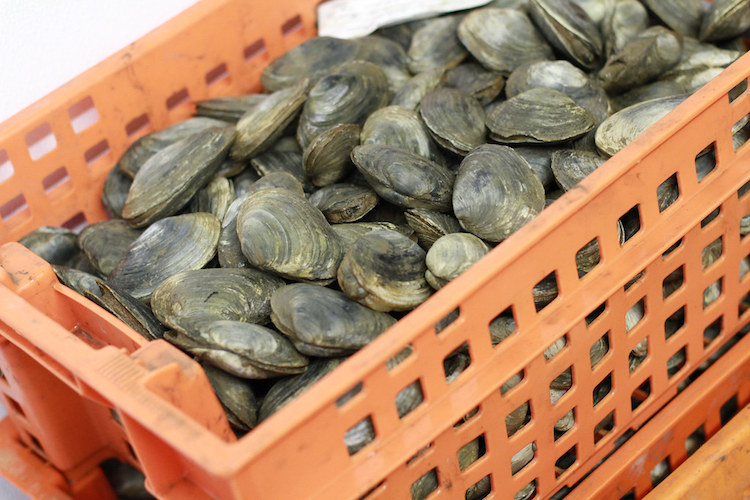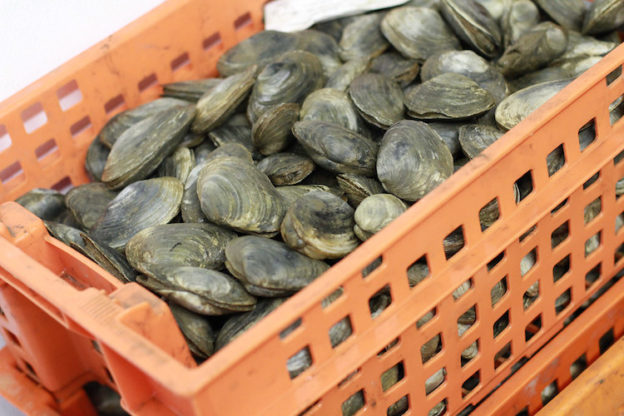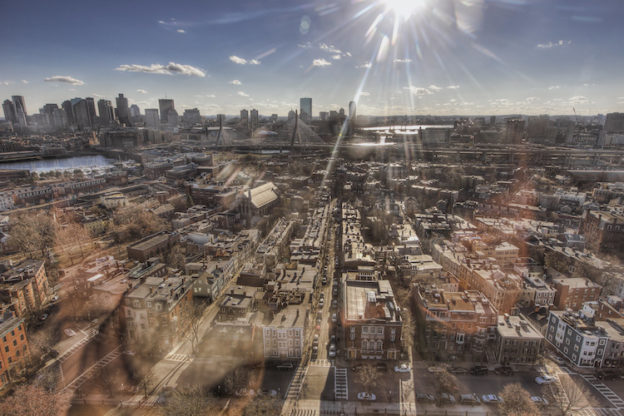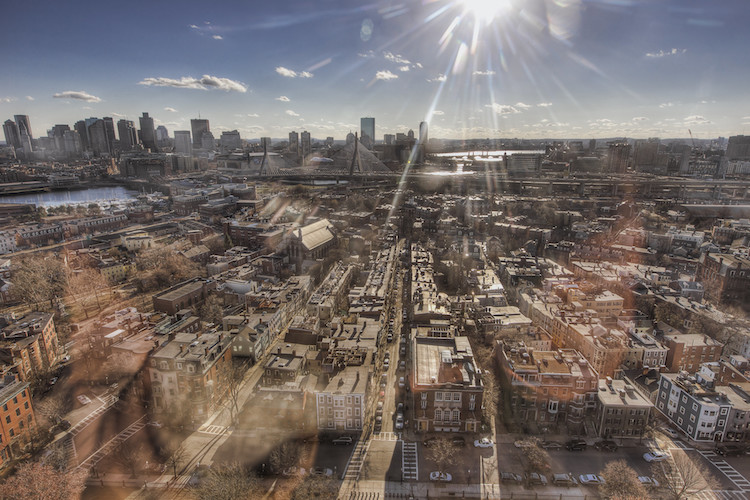For many, summertime in New England means fried clams, oysters on the half shell, and lobster rolls. Unfortunately, the increasing threat of climate change means these delicacies may be harder to come by.
In fact clams, mussels, and other shellfish have seen a drastic decline in their populations. Between 1980 and 2010, shellfish harvest throughout New England has dropped by 85 percent, causing negative impacts to both the environment and the New England shellfish industry.

It’s All About Chemistry
By now you probably know that the increase in atmospheric carbon dioxide (CO2) due to the burning of fossil fuels is driving climate change. What you may not realize is that it’s also changing our ocean’s chemistry, driving a phenomenon known as ocean acidification.
Oceans absorb roughly 30% of the CO2 that is released in the atmosphere. While this may seem like a good thing, there’s a catch: when carbon dioxide is absorbed by seawater a series of chemical reactions occur, reducing the pH and causing the seawater to become more acidic.
In turn, this increased acidity reduces the abundance of carbonate ions. Shellfish need carbonate to build their shells. Without it, clams, mussels, and oysters are having a harder time building and repairing their shells. This results in a shorter lifespans and weaker shellfish larvae.
Without Shellfish, Problems Arise
It’s not just missing out on the annual clambake. A loss of shellfish will lead to several serious issues.
An increase of dead zones.
In the absence of filter-feeding shellfish, nutrients start to build-up resulting in an event known as Eutrophication. This begins with the rapid introduction of nutrients to an area, whether that be through fertilizer runoff or the release of waste. Normally shellfish would filter out these nutrients. Without shellfish, algae and bacteria thrive, absorbing the nutrients along with oxygen in the water. No oxygen will lead to a die off of fish and many other aquatic organisms, resulting in a “dead zone.”
The food web will collapse.
Shellfish are considered a keystone species, organisms that an ecosystem depends on in order to function. When shellfish populations decrease, the food web begins to collapse. Species such as the Atlantic cod, salmon, pollock, squid, and coastal waterbirds will lose a primary food source, decimating their populations as well.
The economy will suffer.
The loss of these species will threaten thousands of New Englanders who rely on shellfish for their livelihoods. With the value of the New England shellfish industry totaling $440 million a year, Massachusetts cannot afford to lose this precious supply.
Keep Oceans Safe for Shellfish
The best way to protect shellfish populations and all the people and organisms that rely on them is to reduce your own carbon footprint. Some ways to do that can be:
- Make the Switch to renewable energy
- Walk, bike, or use public transportation to get to your destination.
- Eat less meat
- Talk about climate change
- Be a Climate Action Hero by taking our monthly climate pledges
- Vote in every election
By doing any or all of these changes, you will make a huge impact, for people and shellfish.
– Post by Jonathan Dong




